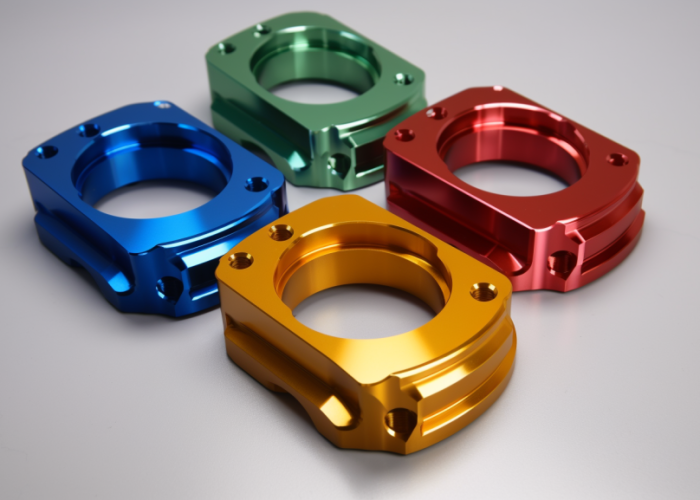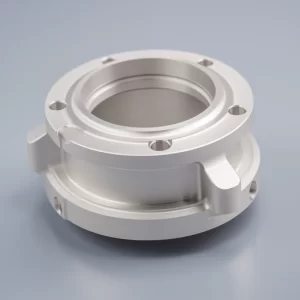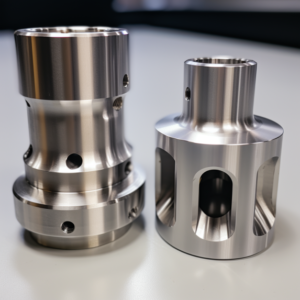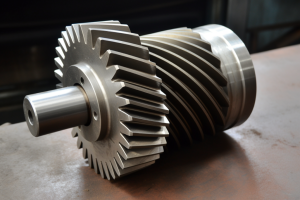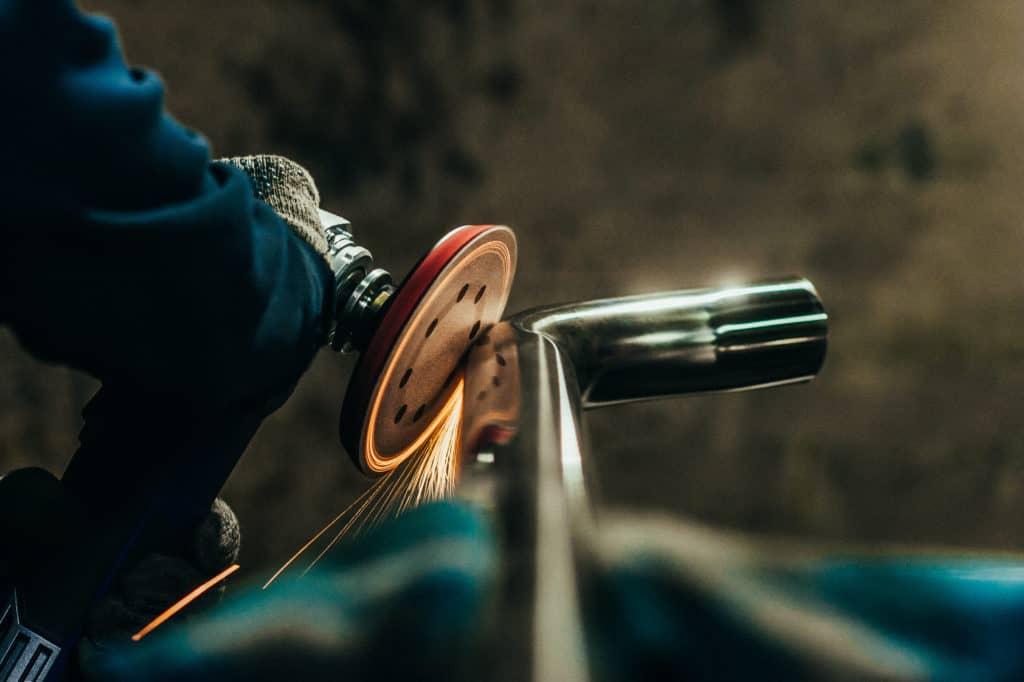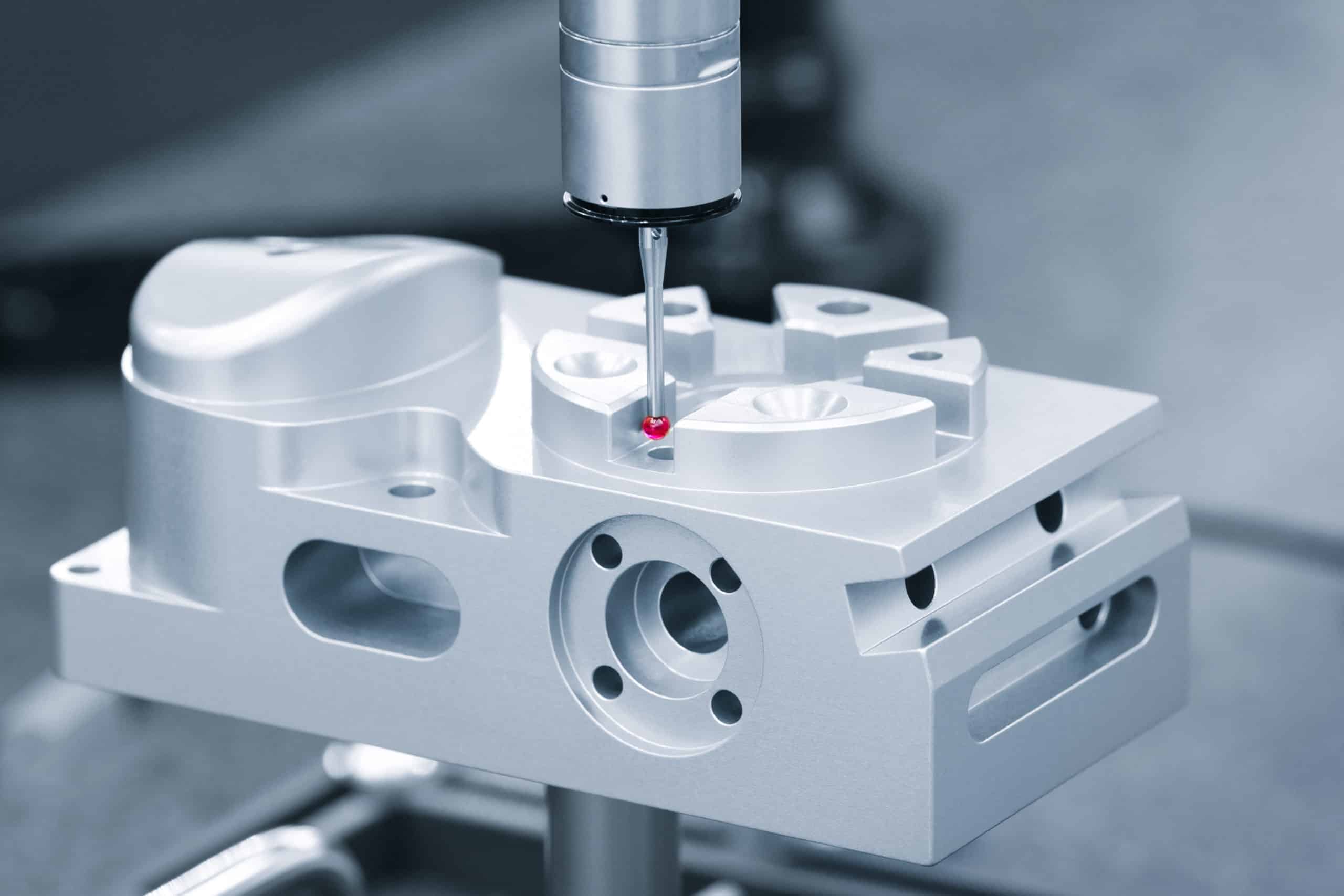Choosing between Type II and Type III anodizing isn’t just about thicker coatings — it’s about understanding when that extra thickness justifies the higher cost and dimensional impact. With experience manufacturing parts across aerospace, medical, and industrial applications, the wrong anodizing choice can mean premature failure or unnecessary expense.
Type III anodizing is the right choice for parts requiring extreme wear resistance, electrical insulation, or operating in harsh environments where standard Type II won’t provide adequate durability. The coating adds 0.001″ to 0.003″ thickness with roughly half penetrating into the aluminum and half building up above the surface.
Learn when Type III is actually necessary, how to manage dimensional changes, and whether your design can justify the cost premium over standard anodizing.
Table of Contents
Which Anodizing Type Does My Application Actually Need?
Type II anodizing handles most applications at 0.0002-0.0005″ thickness and costs 3-5x less than Type III. Choose Type III only for daily sliding contact, electrical insulation >1000V, or saltwater/chemical exposure.
Type III required when:
- Daily sliding contact or >10,000 wear cycles expected
- Electrical insulation requirements exceed 1000V (Type III provides 2000-3000V/mil)
- Saltwater, acids, or temperatures above 200°F in operating environment
- Tolerance budget allows 0.001-0.003″ thickness addition
Type II sufficient for:
- Enclosures and faceplates with occasional handling only
- Indoor/moderate outdoor applications without chemical exposure
- Electronic isolation requirements under 1000V
- Tight tolerances of ±0.002″ or less where thickness matters
From manufacturing experience, audio equipment faceplates, medical device housings, and general industrial brackets typically use Type II effectively. Marine hardware, hydraulic components, and high-voltage enclosures require Type III’s superior protection. Consumer electronics almost never justify the upgrade cost unless facing extreme operating conditions.
Cost impact: Type III adds 3-5x cost premium plus 2-3 weeks additional lead time. The coating thickness often forces tolerance adjustments — medical device manufacturers frequently encounter assembly issues when Type III pushes gasket grooves out of specification.
Design Takeaway: Evaluate your part against the criteria above. If none of the Type III requirements apply, stick with Type II to avoid unnecessary cost and design complications while maintaining adequate protection.
Which Parts Actually Need Type III Anodizing?
Type III anodizing is specified for parts where our machining customers report Type II failures — primarily components with heavy wear patterns, harsh chemical exposure, or extreme temperature cycling that we see in aerospace and marine applications.
Heavy wear components we machine:
- Hydraulic housings: Valve bodies, actuator cases, cylinder components with sliding contact surfaces
- Mechanical assemblies: Pivot brackets, linear slide housings, cam follower mounts experiencing regular motion
- High-cycle parts: Components our customers specify for >10,000 operation cycles
Harsh environment parts:
- Marine components: Hardware destined for saltwater exposure based on customer specifications
- Chemical processing parts: Housings and brackets for equipment exposed to industrial chemicals
- High-temperature applications: Parts specified for continuous operation above 200°F
Customer application patterns: From our experience, aerospace customers consistently specify Type III for hydraulic components and flight hardware. Marine customers require it for any saltwater-exposed parts. Medical device manufacturers use it selectively for autoclave-compatible equipment. Audio equipment customers typically avoid it due to tolerance requirements.
Parts that rarely need Type III: Standard enclosures, mounting brackets, decorative components, and general industrial housings typically perform well with Type II based on customer feedback and long-term performance data.
Design Takeaway: Review your operating environment and wear expectations. If your application matches the heavy-duty categories above, Type III provides the durability our customers have validated in similar applications.
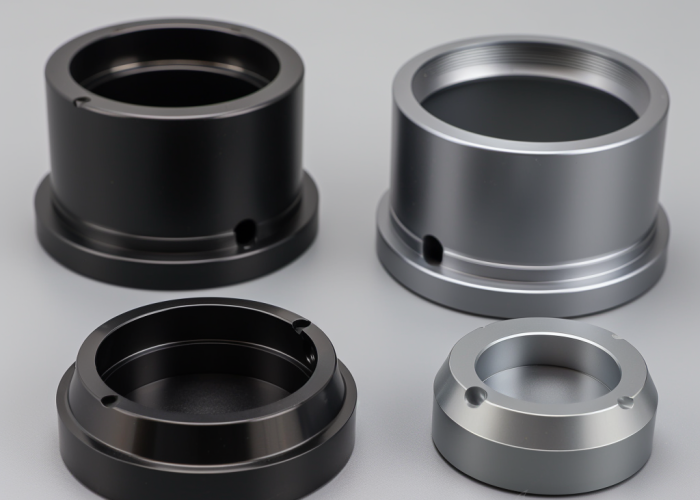
How does the coating thickness affect my tolerances?
Type III anodizing adds 0.001-0.003″ total thickness with approximately 50% building outward from the original surface. Plan for 0.001″ dimensional change per surface for typical 0.002″ coatings.
Dimensional calculation examples:
- 0.500″ ±0.002″ hole: Final size becomes 0.498″ ±0.002″ (machine 0.502″ before anodizing)
- 1.000″ ±0.001″ shaft: Final size becomes 1.002″ ±0.001″ (machine 0.998″ before anodizing)
- M6×1.0 internal thread: Pitch diameter reduces by 0.008″ for 0.002″ coating (4x thickness rule)
- 0.005″ sliding clearance: Becomes 0.001″ after coating both mating parts
Masking options and costs: Selective masking preserves critical dimensions but adds 15-25% to anodizing cost plus 3-5 days lead time. Commonly masked features include threaded holes, press-fit surfaces, bearing races, and electrical contacts. Simple plugs work for round holes; complex geometries require custom tooling.
Post-anodizing machining alternatives: “Anodize then machine” maintains precise dimensions on critical features but adds 1-2 weeks lead time and 20-30% machining cost premium due to coating hardness. Best for bearing surfaces, gasket grooves, and precision mating features.
Design accommodation strategies: Machine holes 0.001-0.002″ oversize, design clearances with coating buildup factored in, use clearance-fit fasteners instead of tight threading, or specify snap-fits with coating tolerance accommodation.
Design Takeaway: Calculate coating impact during tolerance stack-up analysis. Identify which surfaces need dimensional precision and specify masking or post-machining early to avoid assembly problems and costly rework.
Will my chosen aluminum alloy respond well?
6061 delivers the most reliable Type III results with uniform deep gray-black coating and excellent adhesion. 7075 and 2024 present increasing challenges with coating quality issues due to higher copper/zinc content.
Alloy coating performance matrix:
- 6061-T6: Optimal choice — consistent deep black appearance, excellent coating adhesion, standard processing
- 7075-T6: Acceptable with challenges — coating chips more easily than 6061, particularly near sharp edges, bronze-gray appearance instead of black
- 2024-T3/T6: High risk — copper content causes material degradation and “burning” during coating process, many anodizers refuse or charge premium rates
Coating appearance differences: 7075 anodizes to a matte finish while 6061 tends to be brighter, making color matching between alloys difficult when both parts must appear identical. 6xxx-series aluminum produces deep gray-black coatings, while 7xxx and 2xxx series appear more bronze-gray.
Processing considerations: Type III anodizing of 2024 is risky due to higher copper concentration within the alloy, with increased risk of material degradation. 7075 would be more appropriate for Type III coating than 2024. From manufacturing experience, aerospace customers accept 7075’s coating challenges for strength benefits, while consumer electronics consistently choose 6061 for reliable results.
Supplier capability requirements: For challenging alloys, verify anodizer experience with similar materials and request sample parts before production commitment. Aerospace-qualified shops typically handle 7075 and 2024 better than general anodizers due to specialized equipment and process control.
Design Takeaway: Choose 6061 for reliable coating quality and consistent appearance. Accept 7075 only when strength requirements justify potential coating variations. Avoid 2024 for Type III applications unless you can work with specialized anodizers and accept higher process risk.
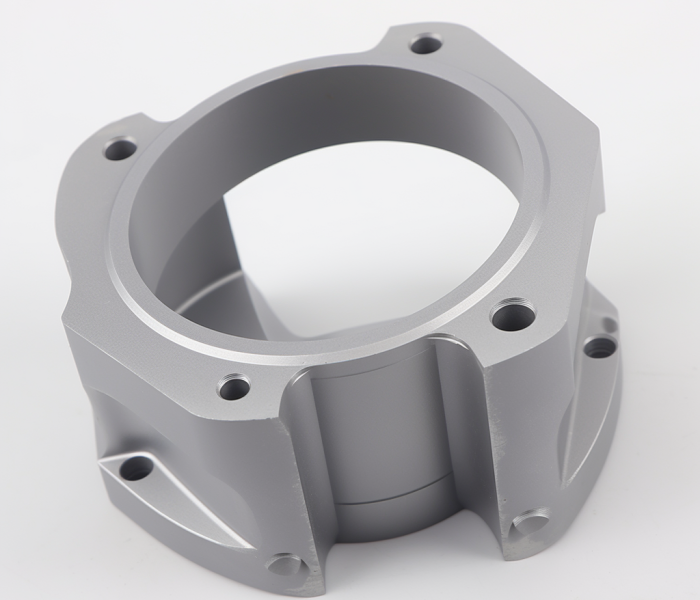
How does Type III affect surface texture, wear, and friction?
Type III creates a matte gray-to-charcoal black surface with 60-70 HRC hardness that feels substantially smoother than raw aluminum. The coating provides exceptional wear resistance — 10x greater than untreated aluminum.
Surface texture characteristics: Type III anodizing can result in 2-3 times Ra compared to the original bare metal surface, with higher anodizing voltages causing more surface roughening. The coating follows part contours uniformly but amplifies any existing machining marks or surface variations.
Ra specification guidance by application:
- Gasket sealing surfaces: Target final Ra ≤2.0 μm (machine to Ra ≤1.0 μm before anodizing)
- Sliding mechanisms: Target final Ra ≤1.0 μm (machine to Ra ≤0.5 μm before anodizing)
- General industrial surfaces: Final Ra ≤6.0 μm acceptable (machine to Ra ≤3.0 μm)
- Aesthetic surfaces: Maintain uniform pre-anodizing finish since coating amplifies variations
Friction and wear performance: Type III surfaces have excellent lubricity properties, allowing hard-coated parts to run against each other without lubrication in many applications. The coating achieves hardness comparable to case-hardened steel with superior corrosion resistance.
Functional surface impacts: The matte texture provides excellent grip for handling and improves paint adhesion for secondary coatings. However, the surface roughness increase can affect precision applications requiring specific Ra values for sealing or sliding functions.
Appearance characteristics: The standard color ranges from deep matte gray to charcoal black, with exact color depending on aluminum alloy and coating thickness. Thicker coatings typically result in darker appearance.
Design Takeaway: Use the Ra specification guidance above to determine machining targets for your critical surfaces. The exceptional wear resistance and lubricity often justify texture trade-offs for functional applications.
Will the anodizing hold up in my operating environment?
Type III anodizing passes 1000-hour 5% salt spray testing and operates continuously at temperatures up to 500°C. The coating provides excellent corrosion resistance in harsh environments where Type II typically fails within 200-400 hours.
Environmental performance often determines whether your Type III investment pays off. We’ve seen marine applications where Type II degraded within 8-12 months while Type III maintained integrity beyond 3 years. Temperature cycling above 200°C creates thermal stress that Type II can’t handle long-term.
Critical failure triggers: Saltwater exposure consistently demands Type III protection. The coating is susceptible to chemical dissolution in the presence of high- and low-pH chemistry, which results in stripping the coating. Strong acids and alkalis can dissolve the aluminum oxide layer regardless of coating type.
The sealing trade-off: When hardcoat anodize is applied for wear or abrasion resistance, coating is left unsealed. If the primary purpose is corrosion resistance, the hardcoat anodize should be sealed. This choice fundamentally changes environmental performance – unsealed provides maximum wear resistance but less corrosion protection.
Standard accelerated testing includes salt spray resistance (minimum 168 hours) but doesn’t always predict real-world performance. Request actual service life data from similar applications rather than relying solely on lab results.
Design Takeaway: Match coating choice to demonstrated performance in similar environments. Many indoor applications succeed with Type II despite engineers’ instinct to specify the “tougher” coating.
What colors are available and how does this affect cost?
Type III anodizing naturally appears as deep gray-black to charcoal, with black dye being the most commonly specified option. Due to the dark nature of the undyed coating, other colors are not as decorative and uniform appearing.
Color expectations create the biggest surprises in Type III projects. The thick, dense coating fundamentally limits aesthetic options compared to Type II anodizing.
Natural appearance reality: 6xxx-series aluminum takes on a deep gray-black color while most 7xxx and 2xxx series appear more bronze-gray. The pore structure of Type III is much smaller than Type II, which is why it is very difficult to dye – the dye can’t enter the pores easily.
Color options and costs: Natural finish costs least with no dye processing. Black dyeing adds minimal cost and delivers consistent results. If a color other than black is needed, sampling is required prior to production. Custom colors require extensive development with unpredictable results and significant cost premiums.
Critical limitation: You cannot dye Type III coating to lighter colors – parts cannot be made lighter than their natural appearance. This catches designers expecting paint-like color flexibility. We’ve seen projects delay 4-6 weeks for color matching attempts that ultimately failed.
Design Takeaway: Plan for natural gray-black appearance from the start. If specific colors are brand-critical, validate feasibility with samples before committing to Type III.
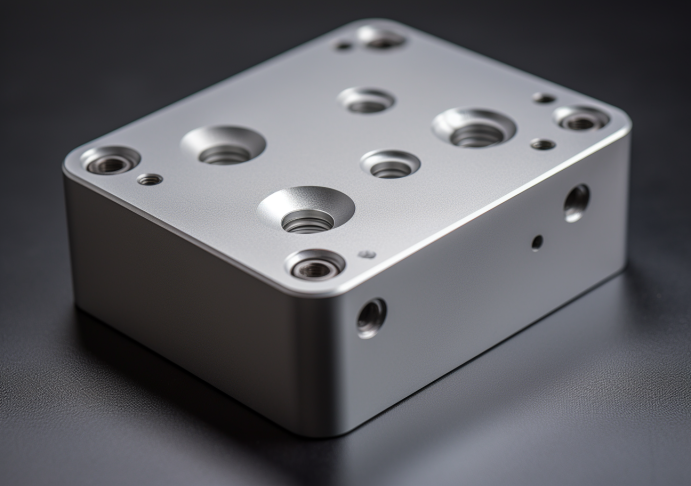
Should I mask critical features to control cost and function?
Masking usually involves a significant amount of hand work, which adds to cost. Masking materials often cannot be reused and add to costs as well.
The masking decision often catches engineers off-guard with its cost impact. What appears as a simple request to “protect the threads” can add 25-50% to your anodizing bill due to labor-intensive hand work and single-use materials.
Critical masking situations: All threaded holes, 1/4″ or smaller, are typically masked when hardcoating unless otherwise specified. Anodic hard coat acts as an insulator, preventing good current flow across the coated area, so electrical contact areas must be masked to maintain conductivity. Precision mating surfaces and bearing areas also require masking to preserve original dimensions.
The economics of alternatives: For threads 1/4-20 and larger, machining oversize before anodizing often proves more economical than masking. For threads smaller than 1/4-20, the range of buildup that anodize adds could be greater than the tolerance range for the part itself. The only guaranteed solution for protecting these tiny threads is masking.
Smart design strategies: Minimize masking requirements through thoughtful design – locate threaded holes away from coated surfaces when possible, use clearance-fit fasteners instead of tight threading, or design snap-fits that accommodate coating thickness. These approaches reduce costs while maintaining functionality.
We’ve seen projects where masking costs exceeded the anodizing itself due to complex geometries. Simple design modifications often eliminate masking needs entirely.
Design Takeaway: Evaluate each feature requiring masking against cost impact. Reserve masking for truly critical surfaces like electrical contacts and fine threads. Consider design modifications that eliminate masking needs for better cost control.
What's the total cost impact versus Type II?
Hard Type III anodizing is performed at a much lower temperature than regular Type II anodizing, and at higher current and voltage, it requires much higher energy use, and is usually considerably more expensive.
The cost reality often shocks engineers expecting a modest premium. Type III typically runs 3-5x more than Type II, transforming what might be a $200 Type II job into a $800-1000 Type III expense.
Breaking down the cost drivers: Type II anodizing averages $0.50-$2.00 per square foot, while Type III costs $2.00-$5.00 per square foot. The specialized equipment, precise temperature control, and extended processing times create this premium. Type III anodizing results in a thicker oxide layer formation and takes longer.
Hidden costs beyond base pricing: Type II anodizing typically costs $0.50-$2.00 per square foot for standard colors, with minimum charges of $65-$150 per batch. Small quantities hit minimum charges harder with Type III, making single prototypes especially expensive. Rush orders can double costs, and complex geometries requiring special racking add 25-50% premiums.
Lead time implications: Standard Type II processing takes 5-7 days, while Type III requires 7-10 business days due to complex temperature control and longer coating cycles. This timing difference can impact project schedules significantly.
The performance benefits often justify the investment for critical applications, but many engineers discover they over-specified when Type II would have performed adequately.
Design Takeaway: Budget 3-5x Type II pricing for Type III, plus longer lead times. Factor batch minimums into project economics – the cost premium becomes most painful on small quantities where you can’t spread fixed costs across many parts.
Conclusion
Type III anodizing provides exceptional durability at 3-5x Type II cost, justifying the premium only for extreme wear, electrical insulation, or harsh environments. Careful specification prevents over-engineering while ensuring adequate protection. Contact us to explore manufacturing solutions tailored to your Type III anodizing requirements.
Frequently Asked Questions
Yes, but the coating’s hardness makes paint adhesion challenging without proper surface preparation. If secondary coating is planned, discuss this with your anodizer – they may recommend sealing modifications to improve paint bonding.
Weld joints create heat-affected zones with different material properties that anodize unevenly, causing visible color variations. If welding is required, plan it before anodizing and specify uniform material preparation to minimize color differences.
Most anodizers can’t selectively apply different anodizing types on the same part in one process. You’d need masking during Type II, then separate Type III processing on exposed areas, which typically costs more than full Type III treatment.
No, your part will be larger. Update your CAD model to reflect final anodized dimensions for assembly clearances. Many engineers forget this step and discover interference issues during assembly, requiring costly redesigns.
Type III’s complex process has higher rejection rates than Type II. Parts may be salvageable with reduced coating thickness, but this changes performance characteristics. Always discuss rework policies and costs upfront with your anodizer.
Standard calipers won’t accurately measure coating thickness. You’ll need eddy current thickness gauges (~$2000) or coordinate with your anodizer for certified inspection reports. Factor inspection costs into your quality control budget.
